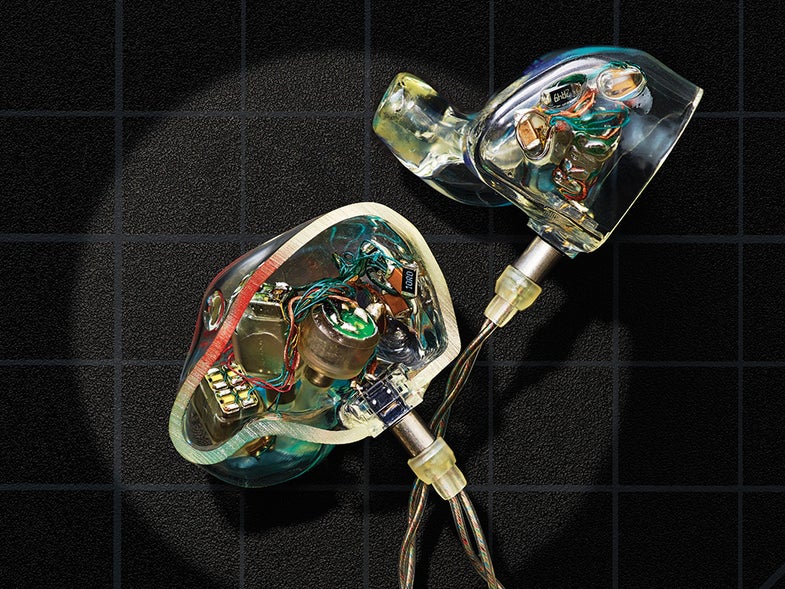An inside look at a $2,200 pair of custom headphones
The Ultimate Ears Live in-ear monitors use hearing aid tech for super-precise sound.

We may earn revenue from the products available on this page and participate in affiliate programs. Learn more ›

Normal earbuds have just one, sometimes two speakers on each side. But those micromachines must handle a wide range of sounds, from Mariah Carey’s high register to Barry White’s silky bass, so they struggle to faithfully reproduce all the right acoustic details. The $2,200 Ultimate Ears Live headphones are different. Each in-ear unit contains eight speakers, and each of those is tuned to a specific part of the audio spectrum. Built for professional musicians who play massive stages, the buds produce a rich, true depiction of the tunes. This is what makes them sing.
1. Vibrating metal
Seven of the speakers rely on a filament called a balanced armature, a type of tech common in hearing aids; metal vibrates between a pair of magnets to generate sound. Two armatures ring the low tones (like for a bass), four do the mids (think: guitars), and one hits the highs (e.g., cymbals).
2. Moving membrane
A magnet inside a rounded metal enclosure causes a 0.2-inch-diameter diaphragm to pulse, displacing air and pushing audio toward your ears. This eighth speaker produces sound at the lower end of the spectrum, adding a visceral bass thump that you feel more than hear.
3. Bespoke ear fit
Tubes made of medical-grade PVC funnel sound from each of the speakers into one channel. To get a perfect fit, Ultimate Ears molds the housing to match a model of your ear canal. That snug connection offers the same external sound reduction as industrial-strength earplugs.
This article was originally published in the Fall 2018 Tiny issue of Popular Science.
